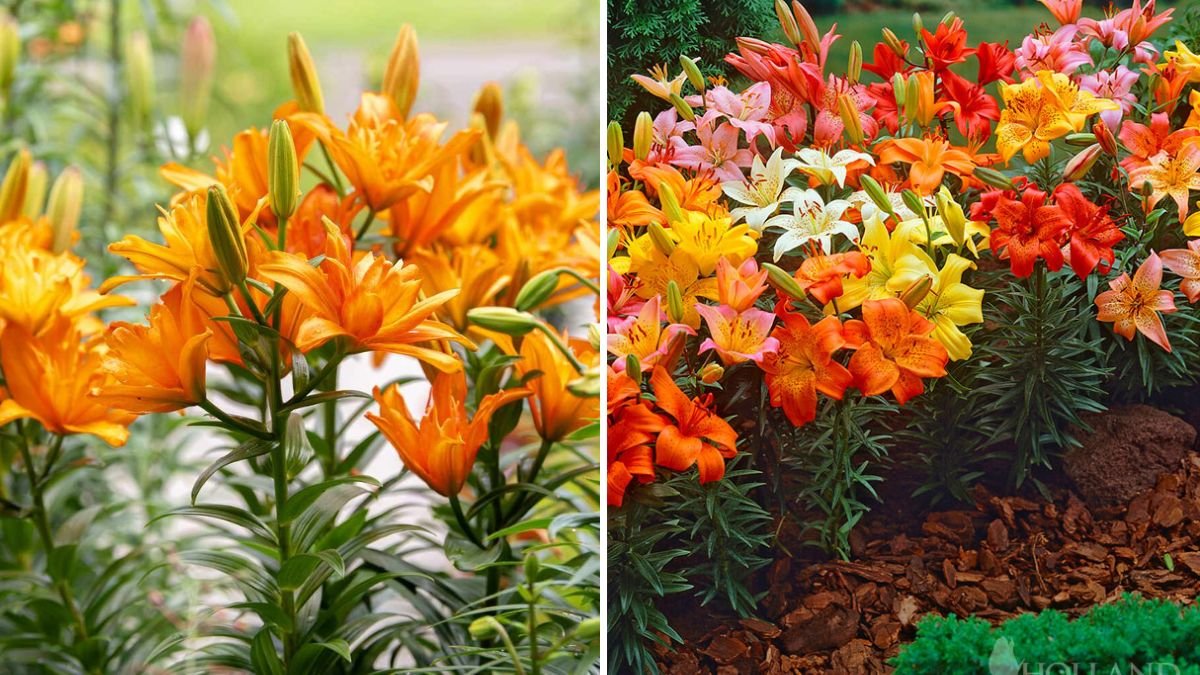Lilies are among the most striking and elegant flowers in any garden. Their tall stems, large trumpet-shaped blooms, and captivating fragrance make them a centerpiece in flower beds, borders, and containers. Growing lilies successfully can provide gardeners with a spectacular summer display that attracts both the eye and pollinators. However, to achieve lush, vibrant blooms, it is essential to understand the requirements of these plants—from soil and planting to care and pest management. This article provides comprehensive guidance on how to grow lilies for stunning summer displays.
1. Understanding Lilies and Their Varieties
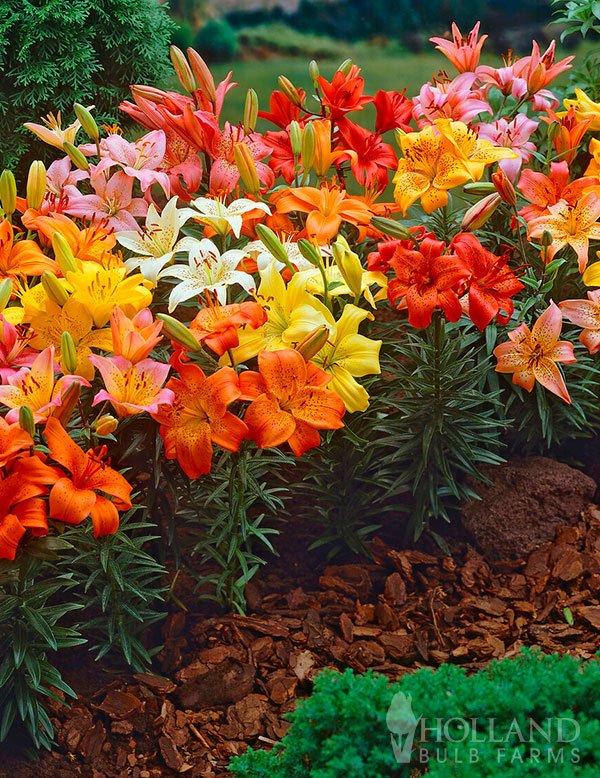
Lilies belong to the genus Lilium, which includes hundreds of species and countless hybrids. They are bulbous perennials, meaning they grow from bulbs that store nutrients and energy for the next season. The most common types of lilies include:
- Asiatic Lilies: Early bloomers, vibrant colors, generally unscented, ideal for mass displays.
- Oriental Lilies: Fragrant, late bloomers with large, dramatic flowers.
- Trumpet Lilies: Tall, trumpet-shaped flowers, very fragrant, perfect for focal points.
- Martagon Lilies: Smaller blooms on branching stems, shade-tolerant.
- Turk’s Cap Lilies: Unusual downward-facing blooms, often in spotted patterns.
Choosing the right variety depends on your climate, garden space, and desired display. For a summer display, Asiatic and Oriental lilies are particularly popular due to their vibrant colors and long-lasting blooms.
2. Selecting the Perfect Site
Location is crucial for lily growth. Lilies need:
- Full Sun to Partial Shade: Most lilies require at least 6 hours of direct sunlight daily. However, in hot climates, partial shade in the afternoon helps prevent scorching.
- Well-Drained Soil: Lilies do not tolerate waterlogged soil, which can cause bulb rot. Raised beds or mounds improve drainage.
- Air Circulation: Proper spacing and airflow help prevent fungal diseases and support strong stems.
When planning your garden, consider placing lilies where they can be viewed from multiple angles, such as along borders, pathways, or in mixed flower beds.
3. Preparing the Soil
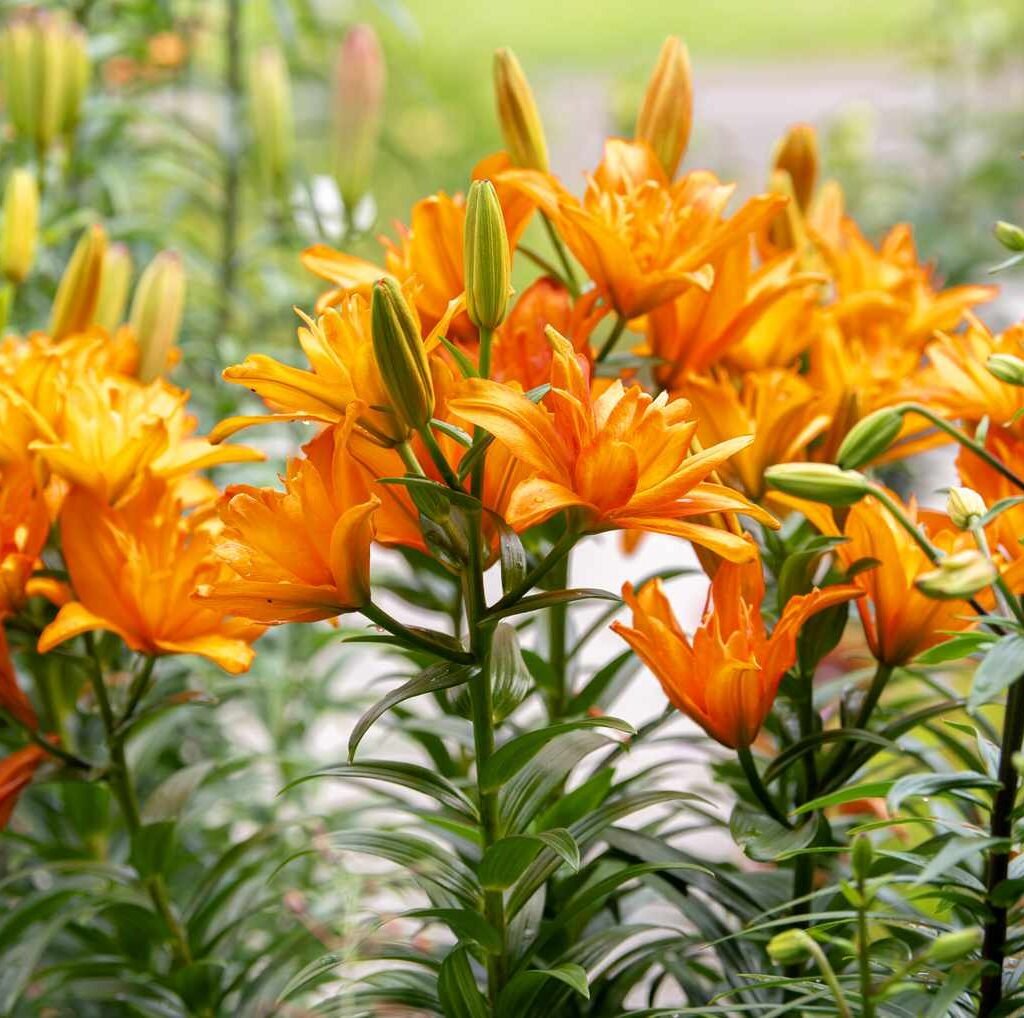
Healthy soil is the foundation for robust lily growth. Follow these steps for soil preparation:
- Soil Type: Lilies thrive in slightly acidic to neutral soil (pH 6.0–7.0) that is rich in organic matter.
- Amending Soil: Mix compost, well-rotted manure, or leaf mold to improve fertility and drainage.
- Bulb Bed Preparation: Loosen soil to a depth of 12–15 inches to allow roots to penetrate easily.
- Drainage Check: Ensure water does not pool around the planting site. Adding sand or grit can improve drainage in heavy clay soils.
Proper soil preparation ensures strong root development, which directly impacts the size and longevity of blooms.
4. Planting Lilies
Planting lilies correctly is essential for their growth and summer display. Follow these guidelines:
- Bulb Selection: Choose firm, healthy bulbs free from mold or damage.
- Planting Depth: Typically, plant bulbs 6–8 inches deep, depending on bulb size. Larger bulbs should be planted deeper for stability.
- Spacing: Space bulbs 8–12 inches apart to allow room for growth and airflow.
- Orientation: Position bulbs with the pointed end up for proper shoot emergence.
- Timing: Plant lilies in early spring or fall, depending on your climate. In cooler zones, spring planting ensures blooms during summer.
After planting, water bulbs thoroughly to help settle the soil and initiate root growth.
5. Watering and Mulching
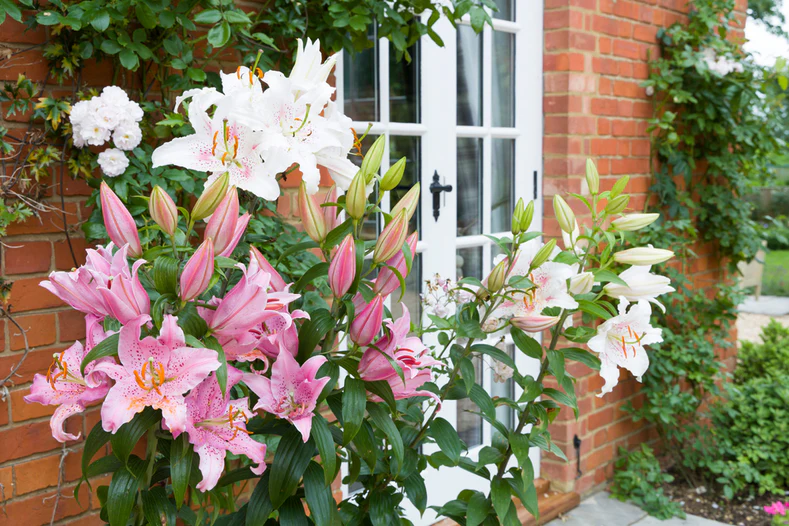
Consistent watering and proper mulching support healthy lilies:
- Watering: Lilies need deep, regular watering, especially during dry periods. Avoid overhead watering to reduce the risk of fungal diseases.
- Mulching: Apply a 2–3 inch layer of organic mulch (straw, bark, or compost) around the base to retain moisture, regulate soil temperature, and suppress weeds.
- Avoid Waterlogging: Ensure mulch does not trap excessive water around the bulb base.
Proper water management ensures lilies develop strong stems and abundant blooms without succumbing to rot or disease.
6. Fertilization for Abundant Blooms
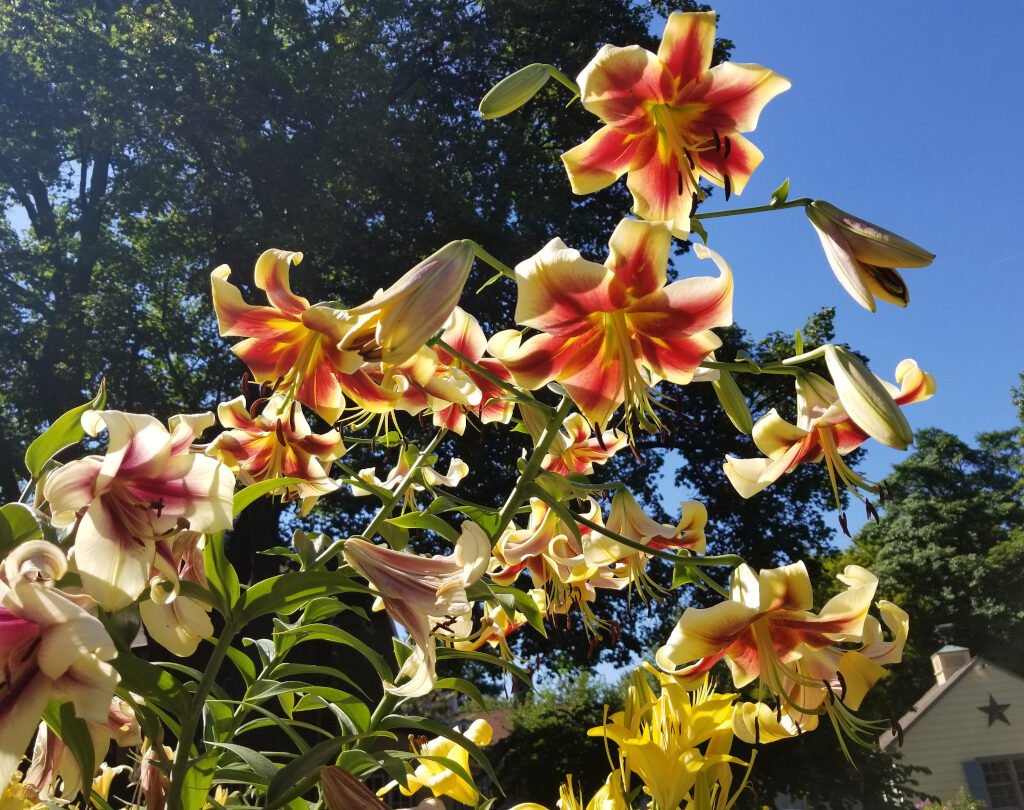
Nutrient-rich soil is essential for lilies to produce large, vibrant flowers:
- Balanced Fertilizer: Use a fertilizer with a balanced ratio of nitrogen, phosphorus, and potassium (NPK 10-10-10 or 14-14-14).
- Timing: Apply fertilizer in early spring as shoots emerge and again when flower buds form.
- Organic Alternatives: Compost tea, bone meal, or well-rotted manure provides slow-release nutrients.
- Avoid Excess Nitrogen: Too much nitrogen promotes leafy growth at the expense of flowers.
Regular fertilization ensures strong stems, larger blooms, and prolonged flowering.
7. Supporting Stems and Preventing Damage
Tall lilies often require support to prevent bending or breakage:
- Stakes: Use bamboo stakes or garden supports, securing stems with soft ties.
- Wind Protection: Plant lilies in areas sheltered from strong winds.
- Spacing: Avoid overcrowding to prevent stems from leaning on each other.
Proper support keeps your summer display upright and visually striking.
8. Pest and Disease Management
Lilies are susceptible to pests and diseases, but preventive care can keep them healthy:
- Common Pests: Aphids, lily beetles, and slugs can damage leaves and flowers. Regular inspection and handpicking pests are effective.
- Diseases: Fungal diseases like botrytis blight cause spotting and stem rot. Ensure proper spacing, good air circulation, and avoid overhead watering.
- Organic Solutions: Neem oil, insecticidal soaps, or biological controls help manage pests without harming the environment.
Early intervention is key to maintaining a flawless summer display.
9. Deadheading and Pruning
Maintaining lilies during bloom improves longevity and encourages new growth:
- Deadheading: Remove spent flowers to redirect energy to bulbs for next season’s growth.
- Pruning: Cut back damaged or yellowing leaves but leave healthy foliage, as it feeds the bulb for next year.
- Post-Bloom Care: After flowering, allow foliage to die back naturally before cutting down completely.
Proper maintenance ensures that lilies come back year after year with stunning summer blooms.
10. Container and Specialty Displays
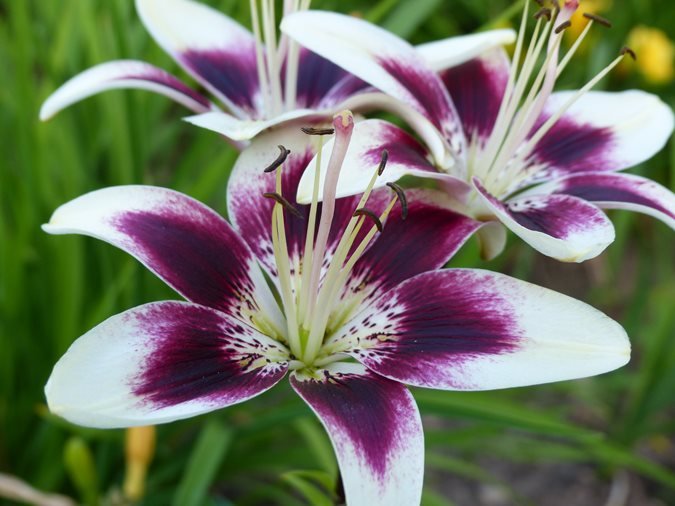
Lilies also thrive in containers and special garden arrangements:
- Containers: Use deep pots with well-draining soil and regular feeding.
- Mixed Planting: Combine lilies with complementary plants like hostas, ferns, or annuals for color contrast.
- Focal Points: Group tall lilies together in strategic garden locations to create dramatic summer displays.
- Cut Flowers: Lilies make excellent cut flowers, extending their beauty indoors.
Containers and focal planting allow flexibility in design and enhance the visual impact of your summer garden.
11. Tips for Maximizing Bloom Impact
- Plant in Odd Numbers: Groups of 3, 5, or 7 create a natural, visually appealing look.
- Color Harmony: Choose colors that complement your garden or create vibrant contrasts.
- Layering Heights: Plant shorter flowers around the base to highlight the tall lilies.
- Scent Consideration: Place fragrant varieties near pathways or seating areas for maximum enjoyment.
By applying these design principles, your lilies will stand out and make a memorable summer display.
Conclusion
Lilies are among the most rewarding garden plants for summer displays. With proper site selection, soil preparation, planting, watering, fertilization, and maintenance, gardeners can achieve spectacular blooms that last throughout the season. By understanding their varieties, providing support, preventing pests and diseases, and planning arrangements thoughtfully, lilies can transform any garden into a striking, colorful oasis. Whether planted in borders, containers, or mixed displays, these elegant flowers bring height, fragrance, and drama to summer gardens, creating an unforgettable seasonal spectacle.
